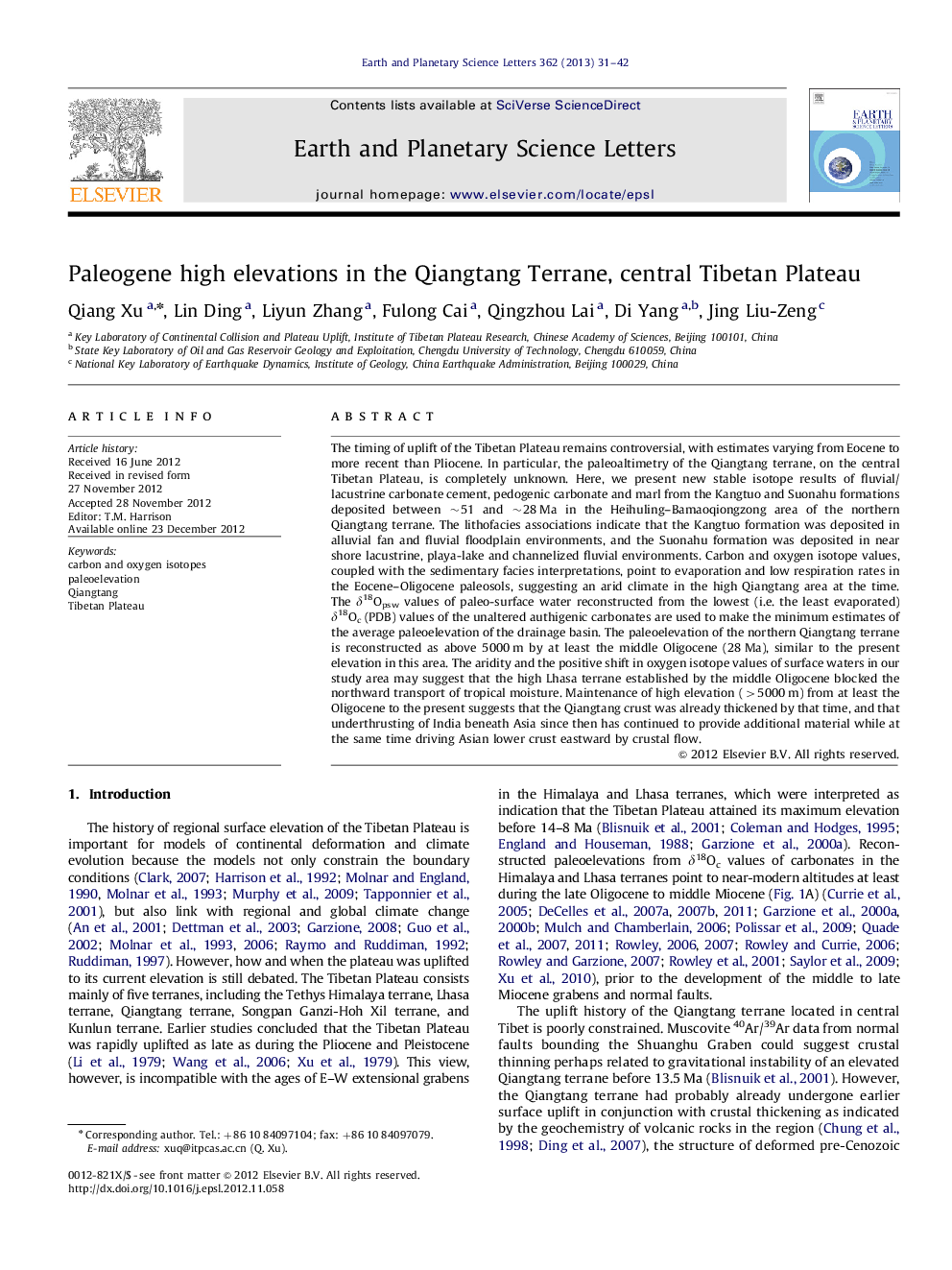| کد مقاله | کد نشریه | سال انتشار | مقاله انگلیسی | نسخه تمام متن |
|---|---|---|---|---|
| 4677242 | 1634791 | 2013 | 12 صفحه PDF | دانلود رایگان |
The timing of uplift of the Tibetan Plateau remains controversial, with estimates varying from Eocene to more recent than Pliocene. In particular, the paleoaltimetry of the Qiangtang terrane, on the central Tibetan Plateau, is completely unknown. Here, we present new stable isotope results of fluvial/lacustrine carbonate cement, pedogenic carbonate and marl from the Kangtuo and Suonahu formations deposited between ∼51 and ∼28 Ma in the Heihuling–Bamaoqiongzong area of the northern Qiangtang terrane. The lithofacies associations indicate that the Kangtuo formation was deposited in alluvial fan and fluvial floodplain environments, and the Suonahu formation was deposited in near shore lacustrine, playa-lake and channelized fluvial environments. Carbon and oxygen isotope values, coupled with the sedimentary facies interpretations, point to evaporation and low respiration rates in the Eocene–Oligocene paleosols, suggesting an arid climate in the high Qiangtang area at the time. The δ18Opsw values of paleo-surface water reconstructed from the lowest (i.e. the least evaporated) δ18Oc (PDB) values of the unaltered authigenic carbonates are used to make the minimum estimates of the average paleoelevation of the drainage basin. The paleoelevation of the northern Qiangtang terrane is reconstructed as above 5000 m by at least the middle Oligocene (28 Ma), similar to the present elevation in this area. The aridity and the positive shift in oxygen isotope values of surface waters in our study area may suggest that the high Lhasa terrane established by the middle Oligocene blocked the northward transport of tropical moisture. Maintenance of high elevation (>5000 m) from at least the Oligocene to the present suggests that the Qiangtang crust was already thickened by that time, and that underthrusting of India beneath Asia since then has continued to provide additional material while at the same time driving Asian lower crust eastward by crustal flow.
► Paleoelevation attained above 5000 m of Qiangtang by at least before 28 Ma.
► Paleoenvironment was dry in Qiangtang during Paleogene.
► Elevation maintained is balanced by northward underthrusting of Indian lithosphere.
Journal: Earth and Planetary Science Letters - Volume 362, 15 January 2013, Pages 31–42
